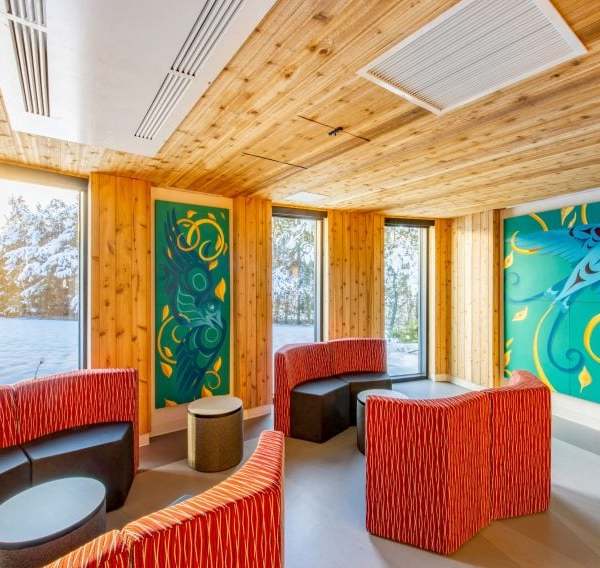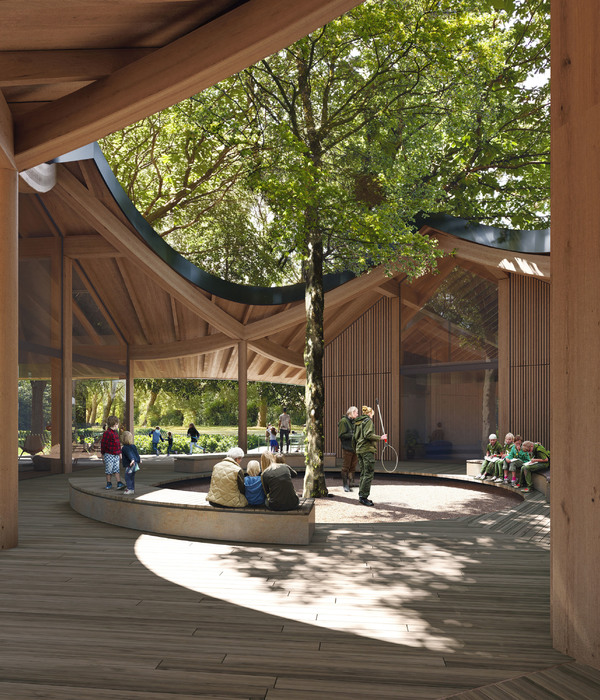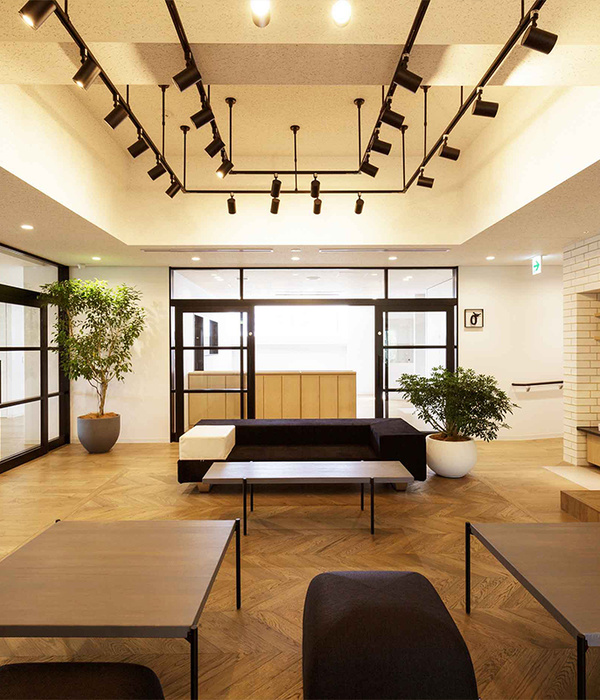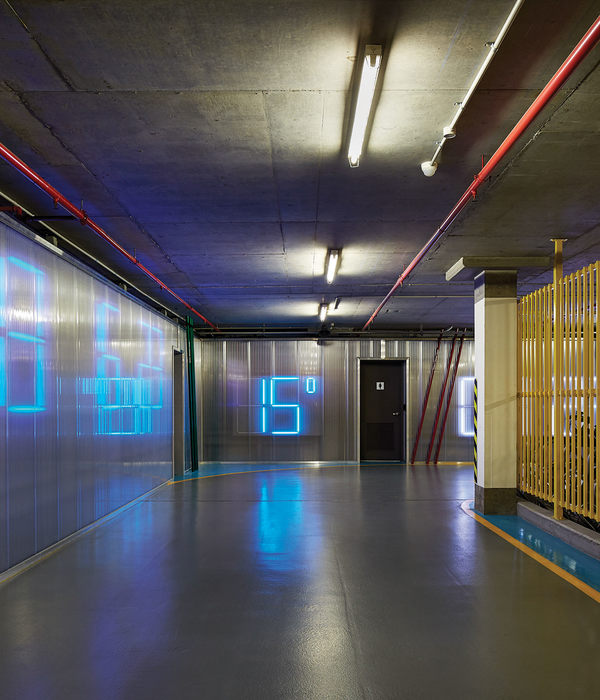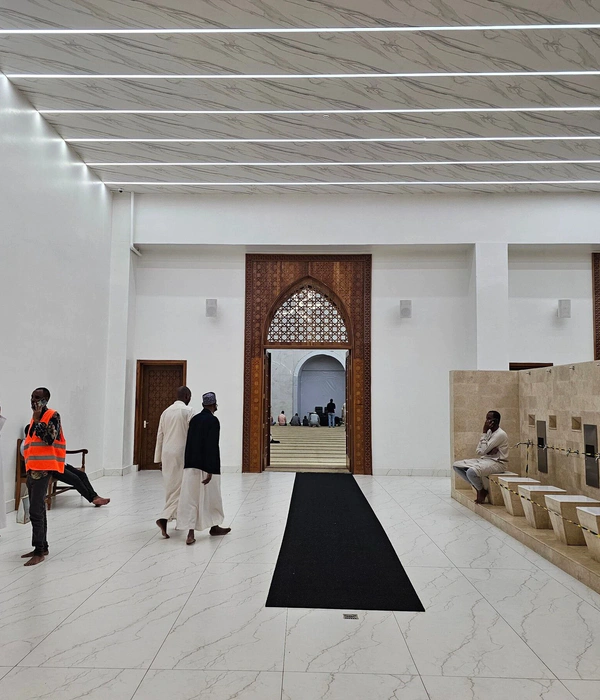Architects:Shenzhen Huahui Design
Area:60505m²
Year:2023
Photographs:Arch-Speaker,Chao Zhang
Lead Architect:Cheng Xiao
Landscape Design:Lab D+H SH
Interior Design:Mushroom Cloud Architecture Design Consulting
Facade Lighting Design:China United Engineering Corporation
Construction Party:Wuxi Zhaowei Culture and Tourism Development
Project Architect:Guowei Liao
Design Team:Yixuan Wu, Fenglian Hong, Wenkai Wang, Shupeng Zhong, Huihai Zeng, Maijie Zhang, Xingyu Zhang, Maofeng Gong, Chaohua Xie
Structural Design:Mu Xu, Tingting Zhao, Changfa Li
Landscape:Yanling Li
Construction Drawing Design:Jiangsu Chenggui Design
Curtain Wall Design:Shenzhen Pengge Curtain wall design Consulting
Signage Design:Liangxiang Design
Clients:Wuxi Overseas Chinese Town Industrial Development, Wuxi Metro Real Estate, Jiangsu Grand Canal Investment Group
City:Wu Xi Shi
Country:China
The Imprint of History. The Canal Hub 1958 project is situated on the former site of the Wuxi Iron and Steel Plant, located along the ancient canal. The historical district along the ancient canal has a rich history, carrying the legacy of Wuxi's early settlers who lived by the river, established the city along the water, and relied on the river for their livelihoods. It has nurtured distinctive features such as the Turtleback City and the Qingming Bridge Water Alleys, representing the unique culture of the Jiangnan Canal Water Town. The predecessor of the steel plant was the Wuxi Local State-owned Iron and Steel United Company, founded in 1958, and it has always been a pivotal industrial landmark enterprise in Wuxi. This place carries important memories of the city's development and records the struggles and dreams of a generation. As the bustling scenes of the past have faded away, today, the steel plant stands silently in a corner of the city. Within the site, several remaining factory structures have become a kind of monumental relic, juxtaposed against the grand structures and densely clustered old buildings along the ancient canal. On the other side of the city road, a new high-rise urban community has emerged. Given such a site with multiple interfaces, various scales, and a mix of cultures, the challenge lies in how to revitalize and regenerate an industrial relic into a vibrant urban area with a focus on culture, commerce, and tourism, serving as its core. After assessment, it has been determined that two factory buildings within the redline boundary have a relatively complete and valuable historical significance for preservation. Among them, the exterior of Factory Building No. 1, with its red brick walls and distinctive pattern of perforated bricks, showcases unique architectural features. Meanwhile, Factory Building No. 3, spanning over 200 meters and occupying a significant portion of the site, stands as a dominant presence. Beyond the strong order created by the continuous columns and roof trusses, the horizontal prefabricated sunshades made of exposed concrete exhibit a sense of strength and rhythm while embodying industrial aesthetics, reflecting the design and construction standards of the era.
Reconstruction of Relationships. At the onset of the design phase, we discovered that the remaining structures of Factory Building No. 1 and Factory Building No. 3, in their state of decay, assumed a perpendicular orientation, forming the fundamental spatial framework of the project. The design, while preserving their original positions, infused them with diverse functions and spaces, achieving a symbiosis of old and new. On the canal side, a waterfront cultural district with varied forms and pleasant scales was designed. On the urban roadside, a relatively complete group of landmark buildings was formed. Thus, under a clear spatial cross-axis planning strategy, multiple formats and diverse forms created an exceptionally rich spatial experience. Starting from the site, the three zones defined by the cross-axis formed by the two factory buildings are distinct and characterized by their unique features. Depending on the different land uses, the design has employed varied strategies for each zone.
Factory Building No. 1: Spatial Cross, Light and Shadow Boxes. In the renovation of the two existing factory buildings, we adopted a differentiated approach. Factory Building No. 1, after renovation, will be used as a tourist hub. The design intention was to preserve and evolve the existing architectural language, ensuring that the original spatial characteristics are as faithfully retained as possible after introducing new functions. We conducted a detailed survey and assessment of the main structures and components. For those that could meet current standards, we aimed to preserve and strengthen them, while damaged or unusable portions were demolished and rebuilt. The new additions were designed to adhere to the original basic relationships and scales whenever possible. Inside the building, an intersecting axis spatial system has been embedded. On one hand, it clearly delineates public spaces from functional spaces, and on the other, it serves as the continuation of the project's overall cross-shaped spatial axis within the building. The public portion consists of a 3-story high atrium for exhibitions and events. Inside the atrium, the exposed concrete columns, weathered steel panels, and the roof truss above showcase the aesthetic beauty of the structure and materials.
For the exterior facade of the building, the strategy employed was to extend and enhance the red brick texture of the original factory buildings. We refined the perforated brickwork found in certain parts of the old factory into a cohesive characteristic of the facade. Glass bricks were incorporated alongside red bricks, creating a dynamic interplay between the solid and the transparent, forming a 'harmony of old and new' – a design that both traces back to its origins and represents regeneration. The main entrance faces the city road, while on the other side along the canal, there is a covered outdoor dock designed to create an outdoor extension space for the main areas of the tourist center. It can also double as a viewing platform for events across the canal.
Factory Building No. 3: Miniature City under the Grand Structure. As the largest-scale building within the entire project, our design strategy for Factory Building No. 3 is 'A Miniature City within the Giant Structure.' Spanning a massive 200-meter length, the grand structural space and horizontal sunshades on the facade, even within the realm of industrial architecture, are quite unique. Building upon its preservation, we incorporated a variety of scales, materials, and functions, ranging from indoor, and semi-indoor to outdoor spaces, ultimately achieving a triple transformation from factory to commerce, from large scale to small scale, and from solemn to lively. To meet the new functional and spatial requirements, during the structural renovation process, we added a steel structure system internally, working in conjunction with the existing concrete piers to provide support. This ensured the preservation of the fundamental form of the factory building while enabling the reuse of the space. The new structure utilizes an all-steel hanging system that extends upwards to support the rooftop art gallery, completely separate from the old structure.
At the main entrance along the city road, we created a stepped and cantilevered gray space, extending the plaza and suitable for various public activities. Surrounding the steel structural columns and suspended 'treehouses' stacked layer by layer, we added a unique and symbolic touch to the renovated building. At the top of the factory building, we designed a horizontally expanding 'Sky Art Gallery,' where the floating horizontal glass volume contrasts and harmonizes dramatically with the original factory's heavy concrete façade panels. The design incorporates courtyards of various sizes and functions into the interior space of the building, with skylights installed at the roofs of each courtyard. A semi-outdoor grand staircase guides the flow of people to the second-floor platform, where internal circulation unfolds around sunlit courtyards. These courtyards serve as the central elements for different spatial narratives, allowing those entering the space to have a more direct and clear understanding of its spatial characteristics. The facade retains the original horizontal panel texture, while the newly constructed interior features a fully glazed facade, further enhancing the contrast between old and new.
The Boxed District – A Cluster of Stacked Landmark Buildings. The Boxed District is located at the intersection of two urban roads, shaping the urban interface and expression. It serves as an important node for the project to showcase itself to the city. However, an overly large scale can create a sense of oppression along the street interface. In the design, a more modern and streamlined approach was chosen to manage the excessive aggregation of building volumes. The large MALL volume is positioned at the street corner, while the remaining parts are divided into smaller boxes. These boxes gradually step down from the corner towards the intersection area between Factory Buildings No. 1 and No. 3, creating a scale that transitions from large to small and from high to low. This design variation also avoids obstructing the overall image of Factory Building No. 3.
Waterfront Cultural District – A Poetic Touch from Jiangnan. In the Waterfront Cultural District, we selected a typical texture from Nan Chang Street, extracted the arrangement of individual units, and designed a vibrant waterfront cultural district with a varied form and pleasant scale, reviving the street memory of Nan Chang Street. The buildings on both sides of the block are kept to a scale of 2 to 3 stories, and the street width follows the dimensions of Nan Chang Street, reconstructing the street's spatial form. In the triangular area where the two axes intersect, a cultural and commercial box with a distinctive facade, C14, has been designed. It complements Factory Buildings No. 1 and No. 3, achieving a transition in scale from the canal to the urban interface. The facade extracts elements from the Wuxi Kiln Group to create standardized facade units, using GRC modules to construct a texture that embodies the characteristics of the Wuxi Kiln Group, creating a strong sense of vitality.
Creating a New Life. The design seamlessly integrates architectural design, spatial strategy, business operations, and event planning, all while considering human behavior within the space. It creates a unique urban texture based on the fusion of old and new elements, providing a foundation for the presentation of lifestyles. The orderly gathering of people, businesses, and activities serves as the beginning of a better public life. Factory Building No. 1, serving as the starting point of Canal Hub 1958, felt like pressing a start button, awakening the long-dormant soul of this site. Since the opening of the Visitor Center, nearly a hundred events of all sizes have been held, including book clubs, press conferences, creative competitions, TED talks, live music performances, art exhibitions, stand-up comedy, concerts, and theater festivals, among others. As the urban living room, Factory Building No. 3 provides additional spatial layers to the entrance plaza, making the square an excellent venue for artistic performances and gatherings.
Project gallery
Project location
Address:Tang Nan Lu, Liang Xi Qu, Wu Xi Shi, Jiang Su Sheng, China
{{item.text_origin}}







